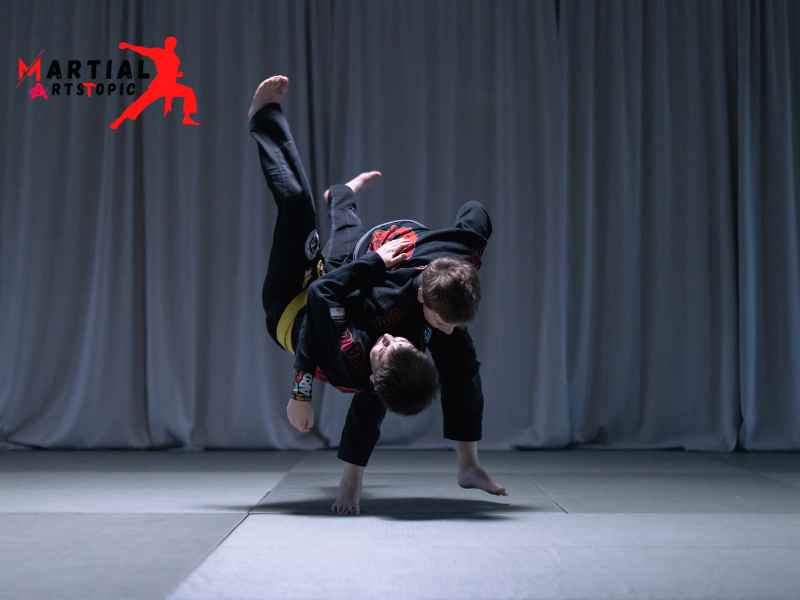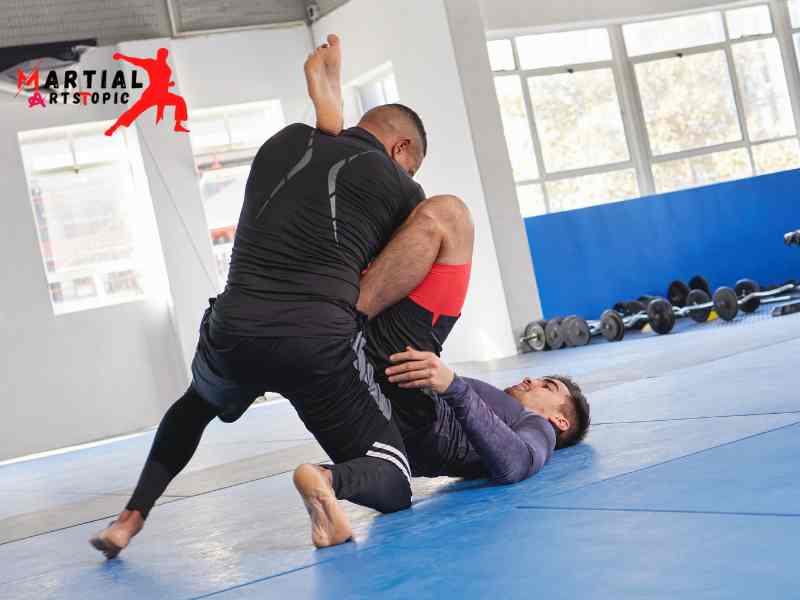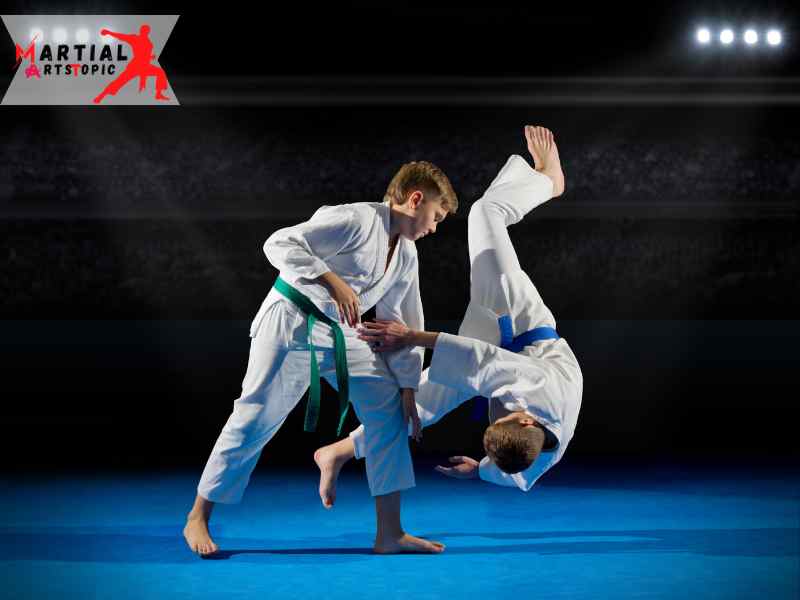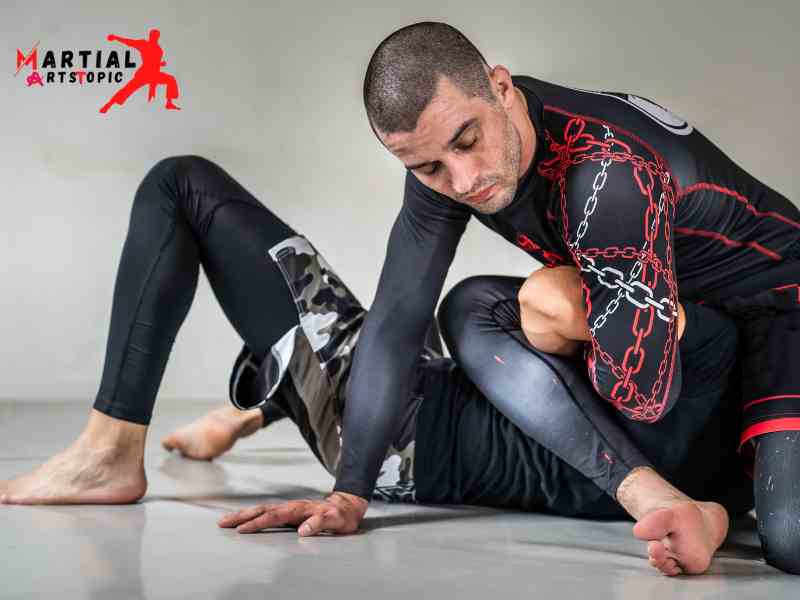
The History and Origins of American Jiu Jitsu
American Jiu Jitsu: The Hidden History and Origins In the world of martial arts, few disciplines have gained as much popularity and admiration as Jiu Jitsu. Originating from Japan, Jiu Jitsu has become a global phenomenon, with practitioners and enthusiasts honing their skills in every corner of the world. While the roots of Jiu Jitsu lie in Japan, it has developed and taken on a unique identity in the United States, giving rise to American Jiu Jitsu.
American Jiu Jitsu is a distinctive form of the martial art that has its own history and origins. To truly understand and appreciate this fascinating discipline, let us embark on a journey back in time to explore the evolution and development of American Jiu Jitsu.
Origins of Jiu Jitsu
Jiu Jitsu, which translates to “gentle art” in Japanese, dates back centuries. They developed it as a method for samurai warriors to defend themselves without weapons in close combat situations. Techniques such as joint locks, throws, and submissions were utilized to overcome opponents, regardless of their size or strength.
The Birth of American Jiu Jitsu

The origins of American Jiu Jitsu can be traced back to the early 20th century. During this time, a Japanese Jiu Jitsu master named Mitsuyo Maeda migrated to Brazil, where he would eventually meet a young Brazilian named Carlos Gracie. Maeda, also known as Count KOMA, taught Carlos Gracie the art of Jiu Jitsu, who then passed it on to his brothers.
The Gracie family played a vital role in the development of Jiu Jitsu in America. In the 1920s, Carlos Gracie moved to the United States and established a Jiu Jitsu academy in California. This marked the beginning of American Jiu Jitsu, as Carlos and his family began to teach and spread the art throughout the country.
Evolution and Growth
Over the years, American Jiu Jitsu has undergone significant changes and adaptations. The Gracie family, particularly Carlos’ brother Helio Gracie, developed a modified version of Jiu Jitsu that focused on leverage and technique rather than strength and size. This style, known as Brazilian Jiu Jitsu, became immensely popular and revolutionized the martial arts world.
Brazilian Jiu Jitsu’s influence on American Jiu Jitsu cannot be overstated. As practitioners from various backgrounds embraced Brazilian Jiu Jitsu, they incorporated its techniques and principles into their training. This fusion led to the birth of American Jiu Jitsu, a unique blend of Japanese and Brazilian styles, tailored to suit the American cultural landscape.
American Jiu Jitsu Today
Today, American Jiu Jitsu continues to thrive and develop. It has become a popular choice for self-defense, physical fitness, and competitive sport. Many academies and training centers across the United States offer American Jiu Jitsu classes, catering to individuals of all ages and skill levels.
The Future of American Jiu Jitsu
As American Jiu Jitsu continues to grow, its future looks promising. With an increasing number of practitioners and enthusiasts, the art will continue to develop, incorporating new techniques and strategies. American Jiu Jitsu competitions and tournaments will further showcase the skill and talent of its practitioners, solidifying its place in the martial arts world.
So, whether you’re a seasoned practitioner or a curious beginner, consider delving into the world of American Jiu Jitsu. Embark on your own journey of self-discovery, physical fitness, and personal growth, as you explore the techniques and philosophy that make American Jiu Jitsu a truly remarkable martial art.
The Benefits of American Jiu Jitsu for Self-Defense
The Benefits of American Jiu Jitsu for Self-Defense, Self-defense is an important skill that everyone should possess. In today’s world, it is crucial to protect yourself and your loved ones from any potential threats. While there are many martial arts styles that can be learned for self-defense purposes, one style that stands out is American Jiu Jitsu.
American Jiu Jitsu is a modern adaptation of the traditional Brazilian Jiu Jitsu, with a focus on self-defense techniques specifically designed for real-life situations. This martial art form combines grappling, ground fighting, and submission holds to neutralize an opponent without relying on strikes or kicks. By utilizing leverage and technique, rather than brute strength, American Jiu Jitsu empowers individuals of all sizes and body types to defend themselves effectively.
So, what are the benefits of learning American Jiu Jitsu for self-defense? Let’s dive in.
- Practical and Realistic Techniques: American Jiu Jitsu emphasizes practicality and realism, teaching students how to defend themselves in real-life scenarios. Unlike other martial arts that focus on flashy moves and acrobatics, American Jiu Jitsu focuses on ground fighting and grappling, which are more likely to occur in a self-defense situation. By mastering these techniques, individuals can feel confident in their ability to handle themselves in a variety of real-world situations.
- Increased Confidence: Learning American Jiu Jitsu for self-defense can significantly boost an individual’s confidence levels. As students become proficient in the techniques, they develop a sense of self-assurance, knowing they can protect themselves if ever faced with a threatening situation. This newfound confidence translates into other areas of life, leading to improved self-esteem and a positive mindset.
- Physical Fitness: American Jiu Jitsu is a physically demanding martial art that provides a full-body workout. Training sessions typically involve cardio exercises, strength training, and flexibility drills. Regular practice of American Jiu Jitsu can help individuals improve their cardiovascular endurance, build muscle strength, and enhance overall physical fitness. Additionally, the techniques learned in American Jiu Jitsu require coordination and agility, leading to improved body control and balance.
- Stress Relief: Engaging in any form of physical activity is known to reduce stress levels, and American Jiu Jitsu is no exception. The intense training sessions act as a great outlet for releasing stress and tension, allowing participants to channel their energy in a positive and controlled manner. Whether it’s venting frustration on the mats or simply focusing on the techniques, American Jiu Jitsu provides a healthy way to manage stress and improve mental well-being.
- Self-Discipline and Focus: Learning American Jiu Jitsu requires dedication, discipline, and focus. Regular practice and adherence to training schedules help students develop self-discipline and a strong work ethic. The structured nature of American Jiu Jitsu classes instills a sense of responsibility and commitment, which can extend beyond the mats and positively impact other areas of life, such as work or personal relationships.
Principles and Techniques of American Jiu Jitsu

Principles and Techniques of American Jiu Jitsu: Master the Art of Self-Defense Are you looking to gain valuable self-defense skills while also improving your physical fitness and mental focus? Look no further than American Jiu Jitsu! This dynamic martial art combines the principles and techniques of traditional Jiu Jitsu with a modern American twist, making it a highly effective and versatile combat system.
The principles and techniques that form the foundation of American Jiu Jitsu, providing you with a comprehensive overview of this exciting martial art. So, let’s get started!
Principles of American Jiu Jitsu
- Technique Over Strength: Unlike other martial arts, American Jiu Jitsu emphasizes technique over brute strength. It focuses on using leverage, joint locks, and precision to overcome opponents, making it suitable for individuals of all ages and sizes.
- Timing and Distance: American Jiu Jitsu teaches practitioners to understand the importance of timing and distance in combat. By maintaining the right distance and timing their moves effectively, practitioners can neutralize an opponent’s attacks and gain the upper hand.
- Ground Fighting: American Jiu Jitsu places significant emphasis on ground fighting techniques. This enables practitioners to defend themselves effectively in close-quarters combat situations, where most altercations end up. By mastering ground techniques, you can confidently handle both standing and ground-based encounters.
Techniques of American Jiu Jitsu
- Joint Locks: American Jiu Jitsu incorporates various joint locks that target an opponent’s joints, such as the wrist, elbow, or shoulder. By applying precise pressure and leverage, these locks can immobilize an attacker, rendering them unable to continue their assault.
- Chokes and Strangles: Another essential aspect of American Jiu Jitsu is the application of chokes and strangles. These techniques aim to restrict an opponent’s blood flow or air supply, forcing them to submit or lose consciousness. Mastery of chokes and strangles can provide a significant advantage in self-defense situations.
- Throws and Takedowns: American Jiu Jitsu includes a wide array of throws and takedowns that allow practitioners to quickly and efficiently bring an opponent to the ground. By utilizing momentum, balance, and leverage, practitioners can control their opponents and dictate the course of a confrontation.
- Escapes and Reversals: American Jiu Jitsu equips practitioners with effective techniques to escape and reverse disadvantageous positions. Whether pinned beneath an opponent or caught in a submission hold, learning these techniques will give you the confidence to extricate yourself from dangerous situations.
Why Choose American Jiu Jitsu?
- Self-Defense: American Jiu Jitsu is a highly practical martial art that focuses on real-world self-defense scenarios. By mastering the principles and techniques of American Jiu Jitsu, you will develop the skills and confidence to protect yourself and your loved ones effectively.
- Fitness and Conditioning: Training in American Jiu Jitsu provides a challenging workout that improves strength, flexibility, and cardiovascular endurance. It is a full-body workout that engages both the mind and the body, promoting overall fitness and well-being.
- Mental Focus and Discipline: American Jiu Jitsu requires mental focus, discipline, and strategic thinking. By training in this martial art, you will learn to remain calm under pressure, make quick decisions, and develop a strong sense of discipline that can be applied to all areas of life.

Whether you are a beginner or an experienced martial artist, American Jiu Jitsu provides a unique and effective approach to self-defense. So, why wait? Start your American Jiu Jitsu journey today and experience the transformative benefits it has to offer.
Remember, mastering American Jiu Jitsu takes time and consistent practice, so find a reputable instructor or training facility near you and embark on this exciting martial arts journey. Get ready to enhance your self-defense skills and become the best version of yourself both on and off the mats!
Training and Progression in American Jiu Jitsu
American Jiu Jitsu, also known as American Jiu-Jitsu or AJJ, is a dynamic martial art that has gained immense popularity in recent years. Combining elements of traditional Brazilian Jiu Jitsu with other grappling styles, AJJ offers a unique approach to self-defense and physical fitness. The world of American Jiu Jitsu, exploring the training methods and progression opportunities that make this discipline so captivating.
The Fundamentals of American Jiu Jitsu
To excel in American Jiu Jitsu, one must have a solid foundation in the fundamental techniques and principles of the art. As a practitioner, you will learn a wide range of ground-based grappling techniques, joint locks, and submissions that are designed to neutralize opponents of any size or strength. The core principles of leverage, timing, and body mechanics are emphasized to maximize your effectiveness in combat situations.
Training Methods and Approach
American Jiu Jitsu training incorporates a variety of drills and exercises to develop both physical and mental attributes. Classes typically begin with a warm-up session to improve flexibility, strength, and conditioning. Technical instruction, follows this where you will learn and practice various techniques under the guidance of experienced instructors. Live sparring, known as rolling, is a crucial component of AJJ training, allowing practitioners to apply their skills in a realistic and safe environment.
Belt System and Progression
Like many martial arts, American Jiu Jitsu follows a belt ranking system to recognize and reward practitioners for their progress. The belt system consists of different colors, starting from white for beginners and progressing through blue, purple, brown, and ultimately black for the most advanced practitioners. Advancement through the belt ranks requires a combination of technical knowledge, skill proficiency, and consistent training. Each belt represents a milestone in your journey, signifying the mastery of new techniques and increased understanding of the art.
Competitions and Tournaments
For those seeking to test their skills and compete, American Jiu Jitsu offers a plethora of opportunities. It holds regularly competitions and tournaments at local, national, and international levels, providing practitioners a chance to showcase their abilities and gauge their progress. Participating in these events not only enhances your technical skills, but also fosters personal growth, resilience, and fair play.
Benefits Beyond the Mat
Beyond the physical aspects, American Jiu Jitsu offers a myriad of other benefits. Regular training promotes self-discipline, mental focus, and stress relief. It enhances your problem-solving abilities and encourages a growth mindset, instilling a sense of confidence and self-assurance. Additionally, the camaraderie and sense of community within the American Jiu Jitsu practitioners’ network create a supportive environment that fosters personal growth and friendships.
Benefits of Practicing American Jiu Jitsu
Are you looking to improve your physical fitness, self-defense skills, and mental well-being? Look no further! The many incredible benefits of practicing American Jiu Jitsu. From enhancing your physical strength and coordination to boosting your self-confidence and mental resilience, American Jiu Jitsu offers a comprehensive package that can transform your life. So, let’s strap on our gi and get ready to explore the world of American Jiu Jitsu!
Enhanced Physical Fitness
One of the key advantages of practicing American Jiu Jitsu is the significant improvement in physical fitness. The techniques and movements involved in this martial art form work your entire body, challenging your strength, endurance, and flexibility. As you engage in intense grappling sessions, your core muscles are constantly engaged, leading to improved stability and balance. Additionally, the cardiovascular aspect of American Jiu Jitsu helps increase your stamina and overall cardiovascular health.
Self-Defense Skills
American Jiu Jitsu is renowned for its practical self-defense techniques, making it an ideal choice for individuals looking to enhance their personal safety. Unlike other martial arts that rely heavily on striking, American Jiu Jitsu focuses on leverage and technique, allowing practitioners to overcome opponents of much larger sizes. By practicing American Jiu Jitsu, you will gain the confidence and skills to effectively defend yourself in real-life situations.
Mental Well-being
Beyond the physical benefits, American Jiu Jitsu offers numerous advantages for your mental well-being. During training sessions, you are constantly challenged both physically and mentally, pushing you outside of your comfort zone. This builds mental resilience, discipline, and perseverance, which can be applied to various aspects of your life. As you progress in American Jiu Jitsu, you’ll develop a heightened sense of self-confidence, self-discipline, and focus that will positively affect your personal and professional life.
Stress Relief and Mindfulness
In today’s fast-paced world, stress has become a common companion for many. American Jiu Jitsu provides an excellent outlet for releasing stress and tension. Engaging in intense training sessions helps release endorphins, the body’s natural feel-good chemicals, promoting a sense of well-being and reducing stress levels. Moreover, the focus required during training enhances mindfulness, allowing you to be fully present in the moment and leave your worries behind.
Community and Camaraderie

Practicing American Jiu Jitsu provides an opportunity to become part of a supportive and inclusive community. You’ll meet like-minded individuals who share your passion for this martial art form and form bonds that extend beyond the mat. The camaraderie and friendship established within the American Jiu Jitsu community create a positive and motivating environment that will keep you coming back for more.
The Different Styles of American Jiu Jitsu
American Jiu Jitsu is a fascinating martial art that has gained popularity in recent years. With its roots in Brazilian Jiu Jitsu, American Jiu Jitsu has developed to incorporate various techniques and styles that set it apart. In this blog post, we will delve into the different styles of American Jiu Jitsu and explore what makes each unique.
- Gi Jiu Jitsu: Also known as traditional Jiu Jitsu, this style involves practitioners wearing a gi (a traditional martial arts uniform) during training and competitions. Gi Jiu Jitsu focuses on utilizing the gi for grips, chokes, and control techniques. It teaches practitioners to use leverage and technique rather than strength to overcome opponents.
- No-Gi Jiu Jitsu: In contrast to Gi Jiu Jitsu, No-Gi Jiu Jitsu is practiced without the traditional uniform. This style emphasizes speed, agility, and adaptability. Since there are no gi grips available, practitioners learn to rely on different techniques such as underhooks, overhooks, and body control to gain an advantage.
- Submission Wrestling: Submission wrestling, also known as catch wrestling, is a style of American Jiu Jitsu that primarily focuses on submissions and ground fighting. It combines elements of traditional Jiu Jitsu, freestyle wrestling, and other martial arts. Submission wrestling practitioners aim to control their opponents and force them to submit through joint locks or chokes.
- MMA Jiu Jitsu: Mixed Martial Arts (MMA) Jiu Jitsu is specifically tailored for competition in the MMA arena. It incorporates a blend of striking, wrestling, and grappling techniques. MMA Jiu Jitsu practitioners need to be well-versed in both standing and ground fighting, as they transition between different ranges of combat.
- Self-Defense Jiu Jitsu: As the name suggests, self-defense Jiu Jitsu focuses on practical techniques that can be used in real-life situations. This style places emphasis on defending oneself against common attacks, such as grabs, punches, and holds. Self-defense Jiu Jitsu is designed to give practitioners the confidence and skills needed to protect themselves in various scenarios.
- Sport Jiu Jitsu: they practiced Sport Jiu Jitsu with the goal of competing in tournaments and championships. This style emphasizes scoring points through sweeps, takedowns, and submissions. Sport Jiu Jitsu practitioners often train with specific rule sets in mind, refining their techniques to excel in a competitive setting.
- Gracie Jiu Jitsu: Developed by the famous Gracie family, Gracie Jiu Jitsu focuses on self-defense and practicality. It places importance on leverage, timing, and technique to overcome larger and stronger opponents. Gracie Jiu Jitsu is known for its effectiveness in real-life situations and has been embraced by law enforcement and military personnel.
In conclusion
American Jiu Jitsu is a dynamic martial art that focuses on the principles of leverage and submission holds. It offers a comprehensive self-defense system that can be applied in real-life situations. With emphasis on both stand-up and ground techniques, American Jiu Jitsu provides practitioners with a well-rounded skill set for both striking and grappling. Whether one’s goal is to compete in a sport setting or develop self-confidence and discipline, American Jiu Jitsu offers numerous benefits. By continuously learning and refining techniques, practitioners can improve their physical fitness, mental toughness, and overall well-being. Ultimately, American Jiu Jitsu empowers individuals to protect themselves and others while promoting personal growth and self-improvement.
